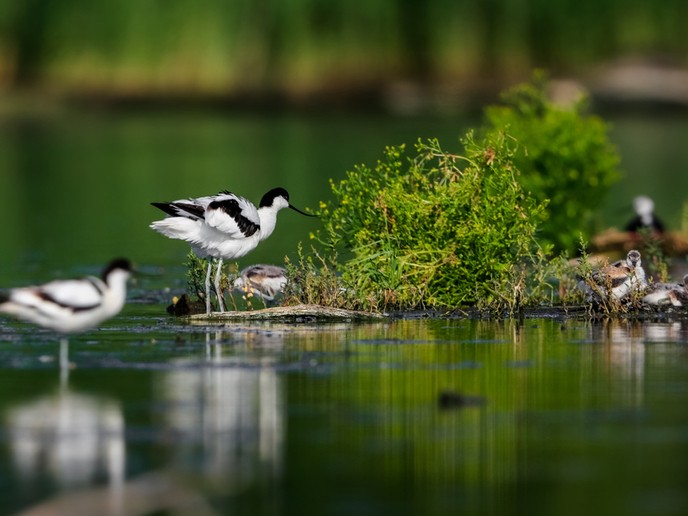Stopping aquatic biodiversity loss with ecosystem-based management tools
Despite providing a range of economic and social benefits, aquatic ecosystems are at risk of irreversible damage from human activities. In support of the EU’s Biodiversity Strategy, the EU-funded project AQUACROSS (Knowledge, Assessment, and Management for AQUAtic Biodiversity and Ecosystem Services aCROSS EU policies) developed practical guidance for identifying and managing threats to biodiversity in Europe’s lakes, rivers, coasts and oceans. To find out more, CORDIS caught up with Manuel Lago, project coordinator, and Hugh McDonald, case study coordinator, both at the Ecologic Institute in Berlin, Germany.
Can you explain ecosystem-based management, and how the AQUACROSS Assessment Framework contributes to it?
Manuel Lago: Aquatic ecosystem-based management (EBM) is a principle-based management approach to protect, restore and enhance the resilience and sustainability of an ecosystem to maintain the benefits it provides to society, while conserving its biodiversity. The AQUACROSS Assessment Framework guides the implementation of this approach. The Framework was itself developed collaboratively, using the same interdisciplinary methodology that it proposes for managing aquatic resources. It draws on economics, biology and ecology, policy, resilience thinking, as well as practical experience, to propose tools to assess complex systems and to formulate appropriate plans.
How does the AQUACROSS approach work in practice?
The Assessment Framework is divided into two sections. The first, ‘What to Assess’, helps practitioners appreciate ecosystems as complex and adaptive, and so stresses the importance of integrating interdisciplinary and stakeholder knowledge. The second section, ‘How to Assess’, provides a practical and sequential guide to assessing complex and interlinked ecosystems and implementing integrated management techniques.
Sounds quite theoretical, are there also practical tools available?
Manuel Lago: Absolutely! We also produced a practitioner-friendly version of the Framework, which we refer to as the ‘Cookbook’. This is intended to help local policy-makers and environment managers, and draws on learning from our case studies. We also supplemented the Framework with additional tools. The Linkage Framework and the AquaLinks Tool were designed to help users understand and weigh up the trade-offs necessary when altering activities such as fishing, recreational opportunities and climate regulation. Changes to one activity can often have unforeseen and complex impacts on others, and practitioners need to think these through.
Can you elaborate on some of the learning developed by AQUACROSS?
Hugh McDonald: AQUACROSS applied the Assessment Framework in eight case studies, representing Europe’s inland, transitional and marine waters, ranging in scale from the 240 km² Faial-Pico Channel, Azores, to the Danube river basin. These case studies also covered a variety of threats, including nutrient pollution, species abstraction, invasive alien species and alterations to morphology. They also incorporated the associated drivers of change such as agriculture, fishing, energy, tourism etc., and so included input from a comprehensive set of stakeholders. As well as having local policy impact, these case studies demonstrate that EBM can protect biodiversity more efficiently than is possible with non-integrative management. Their diverse and specific examples also offer practitioner practical insights into how and when EBM can best be used.
What stage is the project currently at?
Hugh McDonald: The AQUACROSS Information Platform was developed as a free of charge, central access point for any interested parties to publish data on different aquatic ecosystems, biodiversity and EBM practices. It currently has over 655 datasets. Other organisations can sign up and use the platform to host their own data. All AQUACROSS resources are available free of charge on the project website. The AQUACROSS results are having an impact in the case studies. For example, case study results are supporting Marine Protected Area Management in the Azores, and local Spanish policy-makers will continue to apply AQUACROSS methods to assess the condition of habitats in the Intercontinental Biosphere of the Mediterranean (Spain/Morocco). More broadly, the project approach can practically contribute to the achievement of the EU Biodiversity Strategy’s targets – and the development of new post-2020 biodiversity policy.
Looking back on the project, what are you most passionate and proud about?
Manuel Lago: As an environmental economist, I am passionate about evidence-based decision-making. I feel proud that we conducted the interdisciplinary research necessary for informed decision-making in such a complex topic as the protection of aquatic biodiversity. In my view, the project was highly successful in promoting communication between different disciplines such as marine and freshwater ecologists, economists, environmental modelers, and data scientists to develop and apply novel research tools.
Countries
Germany



